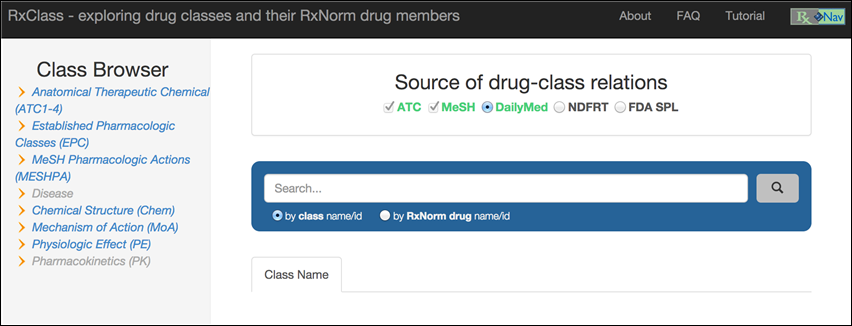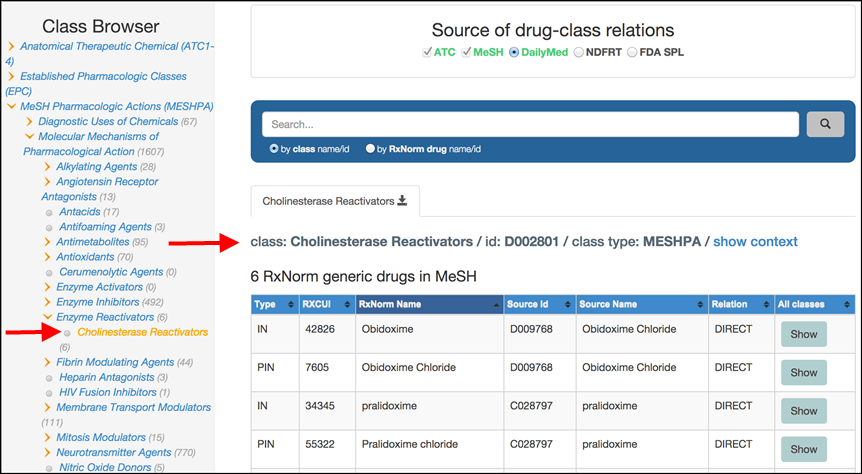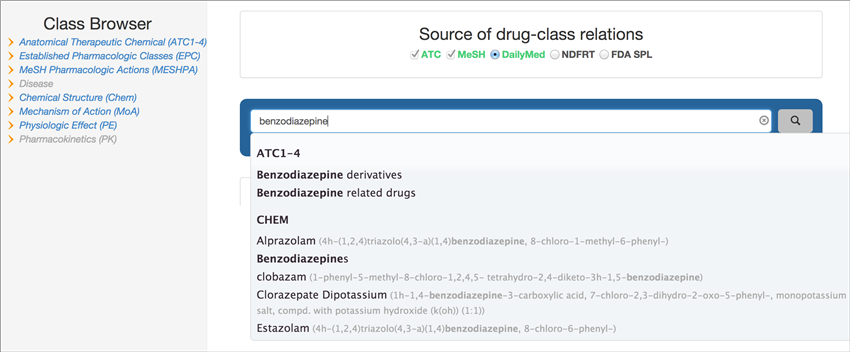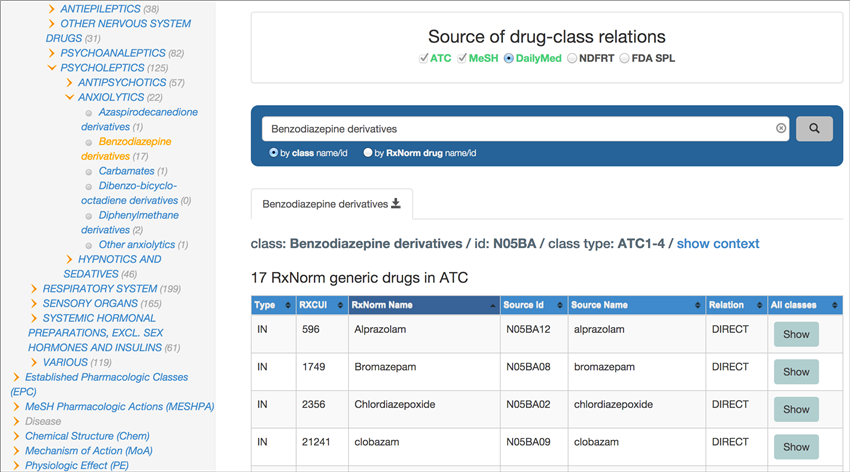



Table of Contents: 2014 SEPTEMBER - OCTOBER No. 400
McLaughlin P. NLM Releases RxClass Drug Class Application. NLM Tech Bull. 2014 Sep-Oct;(400):e13.
RxClass is a new application from researchers in the Lister Hill National Center for Biomedical Communications (LHNCBC) at the National Library of Medicine (NLM). RxClass allows users to search and browse drug classes and their RxNorm drug members through a simple Web interface (see Figure 1). Unlike RxNav, a related application from NLM LHNCBC which focuses on browsing and searching individual RxNorm drugs, RxClass provides a class-centric view of the drug information in RxNorm.

Drug Class Sources
RxClass includes drug classes from the following data sources:
Drug Class Relationship Sources
RxClass includes five sources which assert relationships between drugs and drug classes from ATC, MeSH, and NDFRT:
Drug Source
RxClass includes drugs from the sources mentioned above, which are mapped to ingredients (IN), precise ingredients (PIN), and multiple ingredients (MIN) in RxNorm. RxNorm is a normalized naming system for generic and branded drugs developed by NLM to allow computer systems in hospitals, pharmacies, and other organizations to communicate drug-related information efficiently and unambiguously.
Browse Drug Classes
RxClass provides a simple tree browser for navigating through drug class hierarchies. You can click on the orange arrow next to a class to reveal its subclasses in the tree. Clicking on the name of a drug class populates the results area under the search box with the members of that class, if applicable, and the name, source identifier, class type, and contexts for that class (see Figure 2).

Search by Drug Class/RxNorm Drug
RxClass also provides access to drug classes and their RxNorm drug members through a simple search box (see Figure 3). You can search RxClass by:
For drug classes and RxNorm drugs in multiple contexts, RxClass presents all of the contexts, allowing you to select the desired drug class context to populate the results area.

Results Display
When browsing or searching RxClass, the results display is populated with the drug class you selected and the RxNorm drugs that belong to the class (see Figure 4). For each RxNorm drug, RxClass displays the:

Application Programming Interface (API)
Behind the RxClass Web application is a set of API functions. The RxClass API can be used independently for integrating drug class information into programs.
See the RxClass Overview and RxClass FAQ for more information about browsing and searching drug classes on RxClass. An RxClass turorial is forthcoming.
For questions, comments or feedback about these resources, please contact us at rxnavinfo@list.nih.gov.
By
Patrick McLaughlin
MEDLARS Management Section